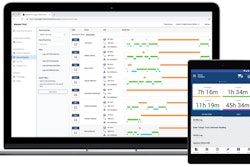
Previously in CCJ’s AOBRD-to-ELD series:
In addition to the coming ELD deadline on Dec. 17, a major factor influencing recent technology decisions by fleets is the sunsetting of 3G CDMA cellular networks. Many have been running AOBRDs with soon-to-be-outdated 3G technology in their trucks to keep their offices connected to drivers and to various mobile applications. Whereas most AOBRDs can be converted to ELDs with a software upgrade, switching to 4G/LTE networks will require new hardware altogether.
“I do not believe that most carriers are even aware of the 3G sunsetting issue. If they were, then there would be a lot more market activity than there currently is. Most carriers will be in for a rude awakening when the 3G network dies or they cannot get 4G/LTE hardware at the last minute,” says Ken Evans, chief executive of ELD provider Konexial.
Konexial’s ELD platform, My20 Fleet, integrates with its GoLoad dynamic load matching service for its customers to receive load opportunities directly from shippers based on their location, hours of service, and asking rates.
Even though the software on most AOBRD devices with 3G cellular modems can be updated over-the-air to be ELD compliant, fleets and drivers have to consider whether or not they want to stay put on their existing hardware.
The US market will be the first to experience a degradation in 3G service, while in the Canadian and Mexico markets 3G is “going to probably be around longer,” says Flo Dougherty, director of product management at Omnitracs.
Over the next couple of years, Verizon, AT&T, Sprint and T-Mobile will be shutting down 3G service in the U.S., according to previous announcements, and shifting their resources to expand 4G LTE and build out next-generation 5G networks.
Verizon will be the first to shut down its 3G network. The announced shut down will be complete in December 2019. The timetable is less certain for other wireless networks, but it is already influencing the mobile strategies of motor carriers.
As one of the largest players in the fleet management space, Omnitracs had been selling a 3G-enabled IVG mobile platform until the end of 2018. Prior to IVG, the company sold an in-cab MCP platform. Both the IVG and MCP systems used 3G from Sprint or AT&T. Since the start of 2019, all of Omnitracs’ products are 4G LTE-enabled.
Ray Greer, chief executive of Omnitracs, estimates the company has 400,000 devices in the field currently that use 3G wireless. These include the MCP platform, which the company developed when it was a business unit of Qualcomm, and the IVG device that replaced the MCP from 2016 to 2018.
CLICK on the image to download CCJ’s exclusive ELD Buyer’s Guide to compare feature and pricing options from technology suppliers.
As a migration path to 4G, Omnitracs has rolled out its new Omnitracs One platform that can run on tablets, smartphones and in-cab IVG devices. Its customers have the option to choose their own cellular networks or have Omnitracs manage it for them, the company says.
Truckload carrier Schneider has some 3G devices — the Omnitracs MCP200 platform — in its fleet, and “we are going to use them until they don’t work,” says Mike Degeneffe, Schneider’s vice president of IT solution delivery. Since early 2018, Schneider has been running tablets in its fleet that are 4G LTE.
One advantage of using a consumer tablet device is that as 4G changes to 5G, Schneider does not have to worry about having outdated hardware that is exposed to network service disruptions. This is because the shelf life of tablets is shorter than purpose-built onboard devices, he says, and so replacing and upgrading tablets will be a necessity before 4G networks become obsolete.
For former driver and current safety director Doug Fry, who works for an approximately 200-truck fleet with terminals in Texas and Georgia, outdated 3G hardware in part influenced a decision to switch to a new e-logs provider this year, one with an easily expandable architecture.
Of the old system his fleet was using, Fry says, the onboard computers tethered to the truck’s ECM were “going obsolete, as better than 90% of the ones we had purchased and installed were not 4G LTE devices and the shutdown of the older CDMA networks was going to leave enormous gaps in coverage where the vehicle would be unable to communicate. Even with volume discounts from our provider, we were still looking at nearly $1,000 worth of new ELD equipment that would have to be purchased.”
For a 200-truck fleet, he adds, “that’s a heck of a hit to the bottom line.”
—Todd Dills contributed to this report.












